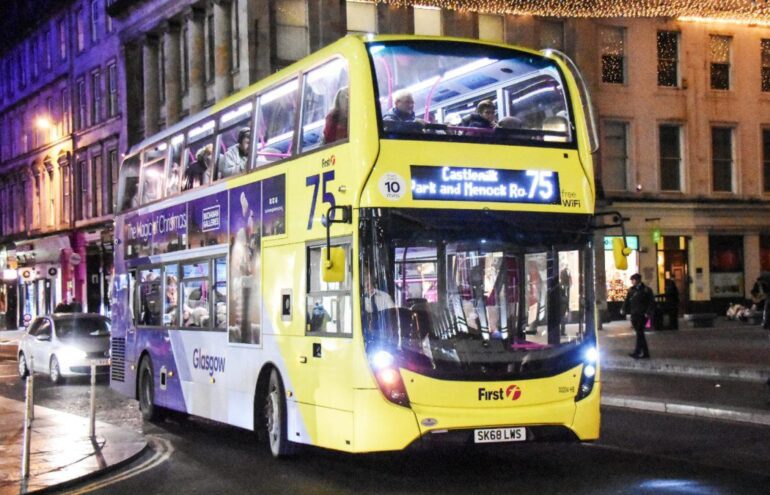TL;DR:
- First Bus, a major UK operator, leverages AI to optimize bus timetables.
- AI’s processing power and adaptability prevent bus bunching and improve punctuality.
- First Bus witnessed a 20% increase in punctuality during peak hours in trial areas.
- The AI software is provided by Prospective, which uses vast data points for training.
- AI-driven public transport optimization is a global trend, exemplified by Japan’s KnowRoute service.
- AI offers the potential for more efficient and responsive public transport planning.
Main AI News:
In the hustle and bustle of busy city life, there’s a common frustration many commuters share – waiting for a specific bus only to witness the baffling phenomenon of “bus bunching,” where multiple buses arrive simultaneously. This occurrence has long been a source of annoyance for passengers. Fortunately, First Bus, a prominent UK operator serving the nation with over 4,000 buses operating for approximately 16 hours each day, is tackling this challenge head-on with the power of artificial intelligence (AI).
Simon Pearson, the Chief Commercial Officer at First Bus, acknowledges the complexity of bus timetables, stating, “Getting them to run on time is one heck of a challenge.” In the past, bus scheduling relied heavily on manual processes and moved at a considerably slower pace. Timetables would typically undergo changes only three times a year.
However, the advent of AI with its enhanced processing capabilities and learning capabilities has transformed this scenario. AI now enables First Bus to make more frequent adjustments to timetables as needed. Moreover, it can automatically adapt to daily road congestion, effectively preventing the clustering of bus services.
The journey towards AI integration commenced in November 2022 when First Bus, a part of the Aberdeen-based First Group, introduced AI technology in trial areas such as Bristol, Glasgow, and West Yorkshire. The results have been promising, with reported punctuality improvements of up to 20% during peak hours. Encouraged by these outcomes, the company is extending AI implementation across all its routes in the UK.
Nevertheless, some trial passengers still find the bus services irregular despite the advancements. According to Pearson, responsive scheduling not only reduces stress for bus drivers but also yields cost savings for local governments, often responsible for subsidizing services. “The business case for this is strong,” he affirms.
While the method of compiling timetables may be less important to passengers, accurate and up-to-date information is crucial, asserts Claire Walters, Chief Executive of Bus Users, a charity advocating for better bus services. Transport Focus, an independent transport watchdog, also emphasizes effective communication of changes to passengers who rely on these services.
First Bus relies on London-based tech firm Prospective to provide its AI software. The training process involves billions of data points, including GPS locations and ticketing records. Prospective’s simulation engine can analyze numerous scenarios within minutes, facilitating real-time decision-making. The software also accommodates the growing trend of electric buses, requiring precise charging schedules and vehicle management.
Looking ahead, Prospective intends to use AI to assist bus companies in devising new routes. The application of AI to optimize public transport is a global trend. In Japan, Next Mobility operates on-demand, shared 10-seater minibusses through its KnowRoute service, using AI to create efficient routes and manage reservations.
Spare, a Canadian AI firm, supports KnowRoute with data on demographics, points of interest, historic rider demand, and more. The goal is to deliver a seamless minibus service experience for passengers.
Eduardo Mascarenhas, an AI expert at the Urban Mobility initiative of the European Institute of Innovation and Technology (EIT), underscores the wealth of data that can enrich AI-driven public transport planning. He envisions a promising future for AI in shaping more liveable towns and cities through efficient transport systems. The road ahead is paved with innovation, offering commuters a smoother and more reliable journey.
Conclusion:
The integration of AI in bus scheduling represents a significant advancement in the public transport sector. It not only enhances the commuter experience by reducing delays and bunching but also offers cost-saving opportunities for local governments. The global adoption of AI-driven solutions in public transport planning indicates a promising future for the market, with the potential for improved efficiency and service quality.

